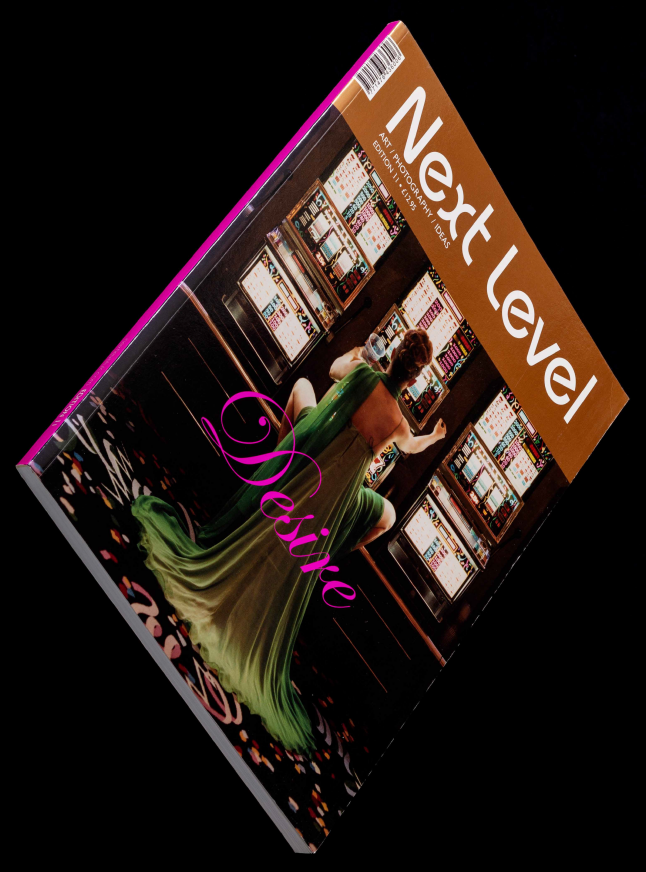Lili AlmogPerfect Intimacy

On mutual seduction.
“Sometimes as a photographer, you feel like a seducer – you befriend people, and work your way into their trust. I don’t like that feeling and I didn’t want them to feel it.”
Photographer Lili Almog was introduced to the Mogyoktang by her assistant. The bathhouses, which can be found throughout Korea, are places where women come to scrub, steam, and sauna communally. Inspired after a personal trip to a Mogyoktang in New Jersey, Almog set out to find a facility that would allow her to photograph the women who participate in the elaborate cleansing process. The resulting series, shot in New York’s Midtown, follows two women: a washer and a patron, who as a child in Korea visited the Mogyoktang owned by her grandmother weekly. The series is an expansion of Almog’s ongoing female portraiture project. Over the past decade, the artist has captured women at their most intimate moments. She describes the portraiture work as emerging organically from a longstanding interest in masks and facades. In an early project, Almog superimposed images from the history of art onto women’s faces, constructing montages that at once examined the way that men have visually represented women and the transformation of the projected self over time. Another project asked subjects to don masks in their bedrooms. Eventually, the physical masks became gratuitous, as Almog realized her subjects were already engaged in a type of complex role-play before her camera. The ensuing Bedroom Sequence, a series of photographs and an accompanying twenty-minute video produced between 1999 and 2002, explores the trappings of identity, as her diverse subjects, aged 18-76, pose in their most private spaces amongst their most personal objects. Once in the context of the bedroom series, Almog attempted to photograph a man. The artist considers this experiment a complete disaster largely because of the sitter’s expectations of gender dynamics. The idea of intimacy in the photographs was lost when the scene was infused with sexualized tension.
The Mogyoktang series developed chiefly from an interest in exploring distinctively women’s worlds. At the same time, Almog challenges the core image, historically, of male desire – Venus at her toilet. She removes the game of seduction between the artist voyeur and his preening subject. Instead, the women in her photographs are exposed, but seemingly unaffected and immersed fully in performing the cleansing ritual. The photographs concentrate on various steps throughout the process and their respective scenes in single statements and groupings. Straightforward in their approach, the photographs still manage to communicate a sense of quiet seclusion and the interiority of her subjects. In Mogyoktang project still #4 (face down), Mogyoktang project still #5 (face cover), and Mogyoktang project still #6 (face up), all from 2005, the patron appears naked upon the slab of the steam room. The lines of her body are softened by the fog of steam and the drag of her motions. With the glow of the overhead light, the triad of images evoke Hans Holbein’s sixteenth-century portrait of the entombed Christ, some mysterious subterranean lair, or dream apparition. In another photograph, part of a diptych, the patron’s nudity is almost obscured entirely by a burst of concentrated light, which colours the surrounding steam and diffuses into a glowing orb around the figure.
Within the context of her broader project, Almog acknowledges that her status as a woman photographer allows her to enter a more secret place with her subjects. The Mogyoktang series emblematizes this idea and almost allows the viewer to forget the photographer altogether. This sensation that the photographs are unmediated, a technique not uncommon in contemporary photography, is especially effective in the locational context of the Mogyoktang, where distinctions of public and private are already blurred, and gains new valence as we imagine the photographer as a complete outsider. The artist approached the insular community of the Mogyoktang, not able to communicate with the women she was photographing. Her assistant, fluent in Korean, functioned as an interpreter throughout stages of shooting.
Almog is adept at dissolving or circumventing the potential barriers between her and her subjects. Her series, Perfect Intimacy, shown at Andrea Meislin Gallery in New York in the summer of 2006 and published earlier that year by PowerHouse Books, was the result of two years of visits to nuns in three Carmelite monasteries: one on Mount Carmel in Haifa, Israel, where the order was founded in 1200, one in Bethlehem in Palestine, and one in Port Tobacco, Maryland. Almog, who is Israeli and Jewish, faced difficulties at the start of the project in 2003. The nuns put her in the guest quarters, while they remained in their separate area, making it hard for her to see them. Eventually, through mutual fascination and the photographer’s sheer determination, Almog was able to develop a relationship with the cloistered women at Mount Carmel, and it was they who helped the artist enter Palestine, by dressing her up as a nun to escape the border. The images that came out of this interaction reveal the spiritual identity and devotion that might be expected, but also the playfulness and individuality that exists within all women, regardless of the nature of their affiliations.
The perceived relationship between her subjects and her role as photographer figures prominently in Almog’s approach to making photographs. She sees the act not as one-sided, as is often imagined and imposed by the power of the camera, but as a mutual seduction. She has brought the person before the apparatus, but it is that subject who ultimately controls what is portrayed. Almog heartily encourages this kind of self-projection, “This is your moment; this is your stage… play a role.”
